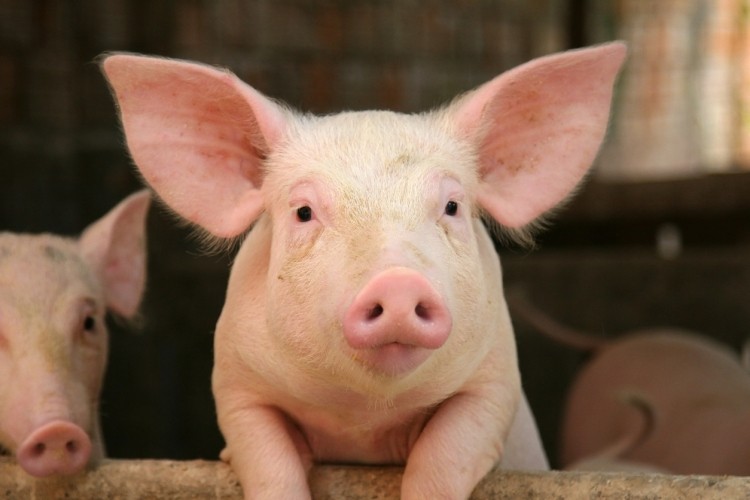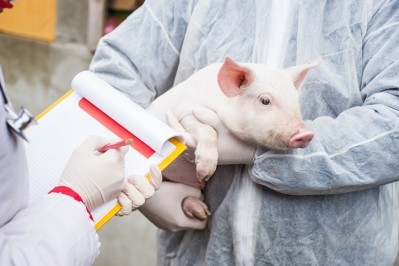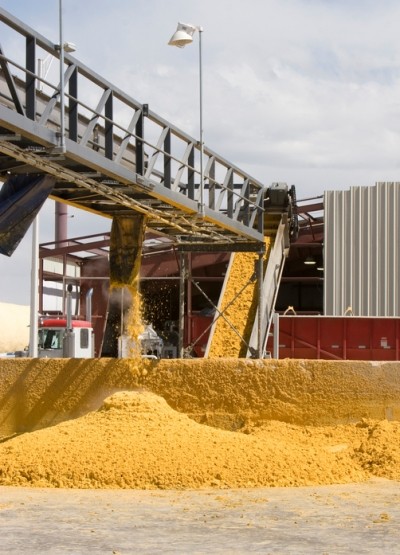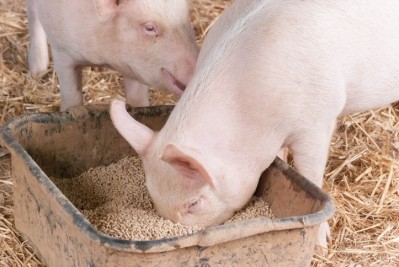'We were able to demonstrate that PRRSV virus can survive in DDGS and soybean meal'

Information on the potential for several swine diseases to survive transportation in feed ingredients was part of the 2017 progress report that the US Swine Health Information Center presented earlier this month.
The overall goal of the project was to establish if it was possible for some diseases, like the porcine epidemic diarrhea virus (PEDV), to survive the trip from China or Eastern Europe to Des Moines, Iowa – about 37 or 30 days of transit respectively, the group reported.
Center researchers have examined high priority diseases selected from an established swine disease matrix, said Paul Sundberg, executive director, the Swine Health Information Center. “This is a model, and it’s a model of potential risks,” he added.
“It’s a model of their potential,” he told FeedNavigator. “We’ve proved the concept that it could happen.”
The effort serves to help producers and industry members be more aware of the potential risk from imported products, he said.
The group now is focused on looking at potential products or feed additives that could serve to mitigate disease contamination, he said.
Feed and disease
There were few specific surprises in the data generated during the feed contamination trials, said Sundberg. Because there were few expectations going in, all findings were somewhat of a surprise.
There were 12 diseases or disease surrogates examined in the project, including PEDV, the project reported. The ingredients tested included conventional and organic soybean meal, soy oil cake, DDGS, lysine, choline, vitamin D, and a complete feed.
Among those viruses found to survive in different feed ingredients for 37 or 30 days were Seneca Valley virus A (SVA) as a surrogate for FMDV, African Swine fever virus (ASFV), porcine sapelovirus (PSV) for swine vesicular disease virus (SVDV), PEDV, feline calicivirus (FCV) for vesicular exanthema of swine virus (VESV), porcine circovirus 2 (PCV2), porcine respiratory and reproductive virus type 174 (PRRSV 174) and bovine herpes virus 1(BHV-1) for pseudorabies virus (PRV), the group reported.
The experiment looked at the transit time and conditions feed or feed ingredients would experience, they said.
In addition to the potential risk of transporting a disease into the US, the work also demonstrates the potential for diseases to be transported across the US, said Sundberg. “We were able to demonstrate that PRRSV virus can survive in DDGS and soybean meal and that’s a concern for the possible transport around the country,” he added.
“What we try to do is help producers by identifying potential risk for them and how best to decrease that risk,” he said.
Disease tracking and imports
Now that the risk potential has been explored, the group is working to better track disease status and movement globally, said Sundberg.
“We’re tracking disease status and pathogen movement around the world – that is maybe related to importation of those pathogens from feed products or otherwise into this country,” he said. “The simple epidemiological assumption if a virus or disease has increased activity someplace – that could lead to more risk of importation into the US from that country.”
With increased presence or activity of a disease in one location there may be a corresponding increase in concern for the potential to import that disease, he said. “The more active it is in a region – the more likely it is to spill over into other countries,” he added.
“That’s why we’re looking and we want to monitor that,” he said.
Additionally, there is an ongoing effort to evaluate the economic side of alternative feed ingredient sources, said Sundberg. The project looks sources and alternatives for the feed ingredients that have been found to offer potential risk for hosting disease.
“We’re just getting started on considering making purchases,” he said. “We’re not yet to that spot where we say, ‘This disease is in this country, so don’t buy anything from that country,’ – we’ve got to do a lot of work on informing producers on alternative sources and ways to mitigate the risk.”
Mitigation efforts
In addition to monitoring diseases, efforts also are underway to find additives that could be used to decrease the presence of a disease in a feed ingredient to a point where it would be no longer contagious or no longer present, said Sundberg.
The mitigation work is in the early stages at this point, he said. “We’d really like to have it at zero – if we have an effective product that we can add to feed that brings the risk to zero,” he added.
The timeline for the project looks to have identified some component combinations to address virus contamination by mid-summer, he said. The work is being done in conjunction with South Dakota State University and Pipestone Applied Research.
“The objective of that step is to try to identify cost-effective products during processing to either mitigate or [reduce] potential risks by pathogens by the feed,” he said. “We’ll have a list of products and evaluate effectiveness in being able to neutralize those higher risk viruses by components.”














